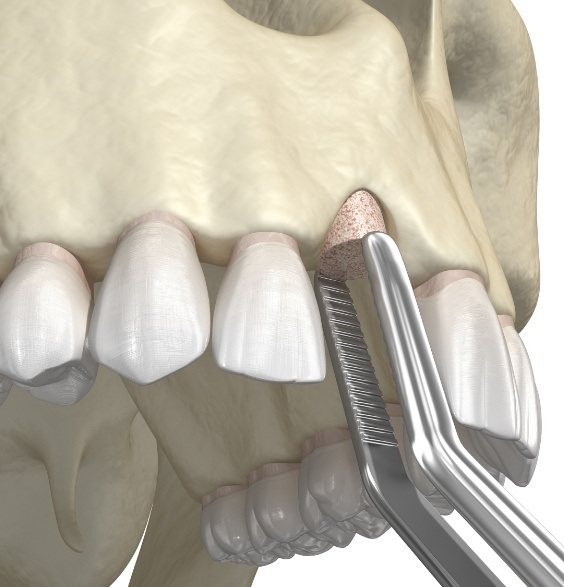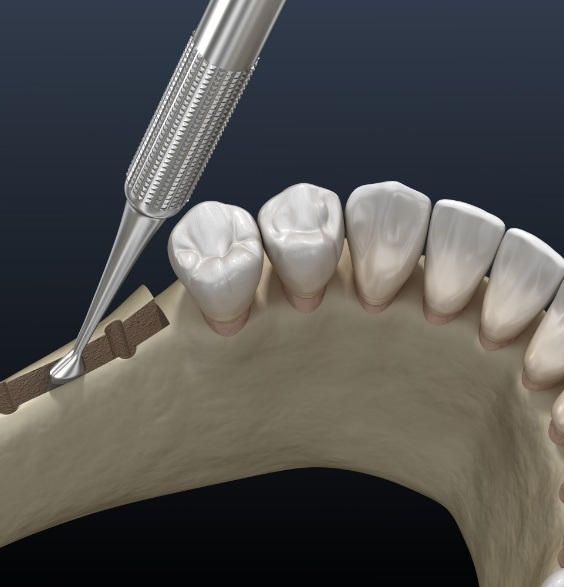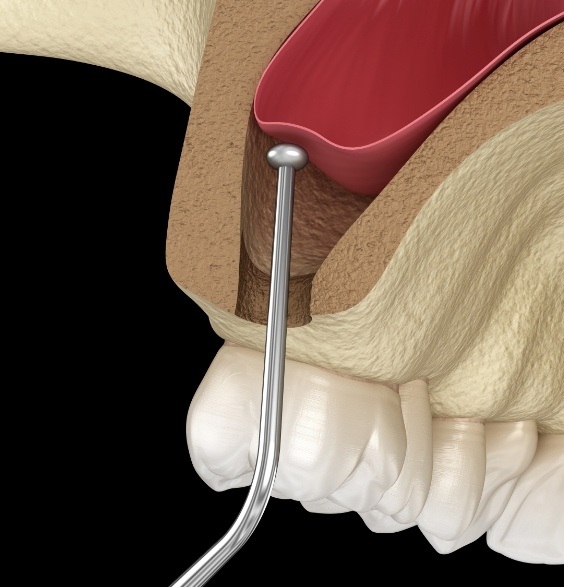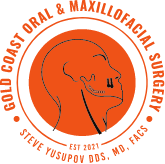Bone Grafting – Roslyn, NY
Reversing Resorption
for a Stronger Jawbone
Bone grafting is the process of restoring lost jawbone. As mentioned in the dental implants section, the success of a dental implant depends partly on the underlying bone. Historically, to perform bone grafting, the bone had to be harvested from another area and transferred to where the tooth or several teeth are missing. Currently, we utilize carefully processed FDA-approved human donated bone as the main source. Bone grafting from our Roslyn, NY oral surgeon can be classified as one of three types.
Why Choose Gold Coast Oral & Maxillofacial Surgery Steve Yusupov DDS, MD, FACS for Bone Grafting?
- 1 Oral Surgeon Dedicated to Ensuring Optimal Results
- 2 We Show Patients How Treatment Works Beforehand
-
3 IV Sedation Available
to Minimize Anxiety
Socket Preservation

First and perhaps the simplest is socket preservation. This is a procedure where an extraction socket is grafted at the same time as the extraction to prevent or restore loss of bone volume in the site. To contain and allow the graft to consolidate a collagen membrane is placed over and secured with resorbable sutures. It takes anywhere from 4 to 6 months for these grafts to consolidate and be ready for implantation. During the process of healing, Dr. Yusupov will periodically evaluate the site for appropriate healing.
Alveolar Ridge Augmentation

The second type of bone grafting is alveolar augmentation, which is a type of grafting that is done to increase bone volume at a fully healed edentulous site that is missing bone due to longstanding edentulism or not performing socket preservation at the time of extraction. This type of graft utilizes the same donated bone and placement of membrane. Additionally, we would utilize patients’ own growth factors that are obtained by drawing patients’ own blood. This type of procedure is also done with intravenous sedation and is likely the most involved in terms of postoperative recovery.
Sinus Augmentation

Another type of bone grafting is maxillary sinus augmentation also known as the sinus lift. If the teeth have been removed from the upper jaw, the maxillary sinus, which is an air pocket located above the upper jaw, begins to enlarge thereby resorbing the remaining jawbone. To place dental implants, the missing bone is restored via the sinus lift. Briefly, it’s a procedure where the bone is added into the sinus while preserving the integrity of a very thin sinus membrane. Frequently implants can be placed at the same time as the sinus lift. The grafted bone in sinus lifts takes 6 months to consolidate.
More About Bone Grafting
Bone grafting is the process of restoration of the lost jaw bone. As mentioned in the dental implants section, the success of a dental implant depends partly on the underlying bone. Historically to perform this, the bone had to be harvested from another area and transferred to where the tooth or several teeth are missing. Currently, we utilize carefully processed FDA-approved human donated bone as the main source. Bone grafting can be classified as one of three types:
First and perhaps the simplest is socket preservation. This is a procedure where an extraction socket is grafted at the same time as the extraction to prevent or restore loss of bone volume in the site. To contain and allow the graft to consolidate a collagen membrane is placed over and secured with resorbable sutures. It takes anywhere from 4 to 6 months for these grafts to consolidate and be ready for implantation. During the process of healing, Dr. Yusupov will periodically evaluate the site for appropriate healing.
The second type of bone grafting is alveolar augmentation, which is a type of grafting that is done to increase bone volume at a fully healed edentulous site that is missing bone due to longstanding edentulism or not performing socket preservation at the time of extraction. This type of graft utilizes the same donated bone and placement of membrane. Additionally, we would utilize patients’ own growth factors that are obtained by drawing patients’ own blood. This type of procedure is also done with intravenous sedation and is likely the most involved in terms of postoperative recovery.
Another type of bone grafting is maxillary sinus augmentation also known as the sinus lift. If the teeth have been removed from the upper jaw, the maxillary sinus, which is an air pocket located above the upper jaw, begins to enlarge thereby resorbing the remaining jaw bone. In order to place dental implants, the missing bone is restored via the sinus lift. In a nutshell, it’s a procedure where the bone is added to the sinus while preserving the integrity of a very thin sinus membrane. Frequently implants can be placed at the same time as the sinus lift. The grafted bone in sinus lifts takes 6 months to consolidate.
